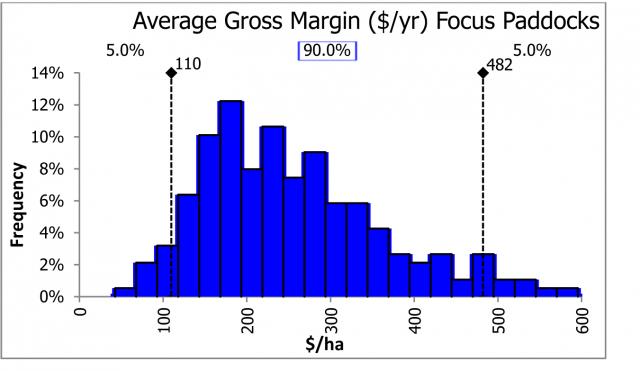Cereal-based crop rotations are proving to be the most profitable in medium rainfall areas of the Western Australian wheatbelt, achieving gross margins of up to $600 per hectare per year.
Details of an economic analysis of a range of crop rotations, or sequences, were presented at the West Midlands Regional Crop Updates this week (10 March).
The data was acquired from the Department of Agriculture and Food’s Focus Paddock project, funded by the Grains Research and Development Corporation, from 184 paddocks across the agricultural region between 2010-13.
Department economist James Hagan said the results indicated the majority of paddocks returned positive gross margins over the four year period, with an average of $235 per year.
However, Mr Hagan said there was a significant range in the results.
“Half of the paddocks retuned gross margins of between $175 and $315 per hectare per year,” he said.
“It’s important to note that the rotations were assessed on actual inputs, rather than average prices, with wheat and canola prices notably higher than the long term average.”
The best performing rotation across the agricultural regions was wheat-canola-wheat, while the second best returns were generated by a combination of three years wheat-barley and one year canola.
“Interestingly, in the majority of cases there were only minor differences between the gross margin returns of the best performing sequence and the second and third best rotations,” Mr Hagan said.
“In some cases there was a mere $20 per hectare difference in performance, which could easily be accounted for by better marketing, different chemical or fertiliser prices or any number of other factors not related to the agronomics of the rotations chosen.”
Although lupins were not a component of the most profitable rotations, they did have a strong presence in the second and third most profitable rotations – particularly in the northern wheatbelt.
Likewise, although pastures were not part of the most profitable rotations, they were among the top three performances in the southern grain growing area.
Mr Hagan said the input costs produced some interesting findings, some of which suggested that pastures had greater potential.
“The analysis also showed that chemical costs did not differ greatly between crop species, although pasture production proved a very low cost break option,” he said.
“Similarly, fertiliser costs for cereals and canola were fairly similar but lupins and pastures were used as low cost options.
“These combined results suggest that pastures, overall, were not being managed to peak productivity, providing potential to improve management and profitability.”
While the survey did not reveal any strong correlation between rotations and weed or disease incidences, Mr Hagan suggested that was most likely due to the low presence of these constraints in the paddocks.
“About 75 per cent of paddocks had weed numbers below 20 plants per square metre, while half were below five plants per square metre,” he said.
“Likewise, 90 per cent of paddocks had either no or very low levels of disease, which remained fairly constant.
“However, detections of Root lesion nematodes increased over the four year period, which may threaten canola’s increasingly dominant position as the break crop of choice.”
The project will conclude at the end of the financial year.
Media contact: Jodie Thomson/Megan Broad, media liaison +61 (0)8 9368 3937

